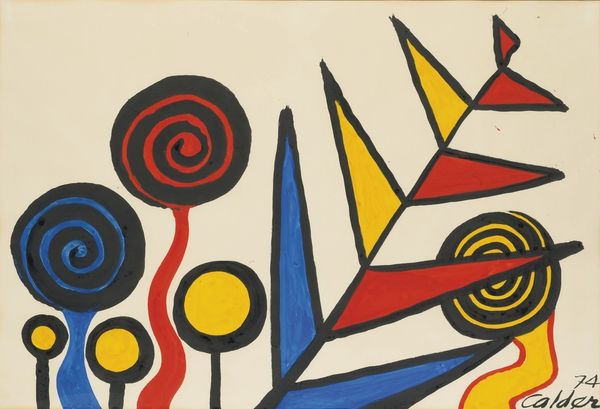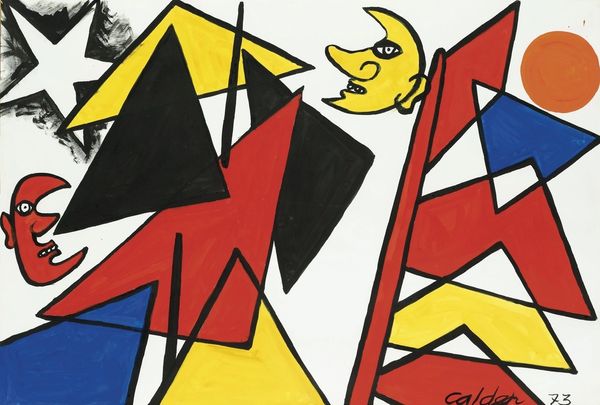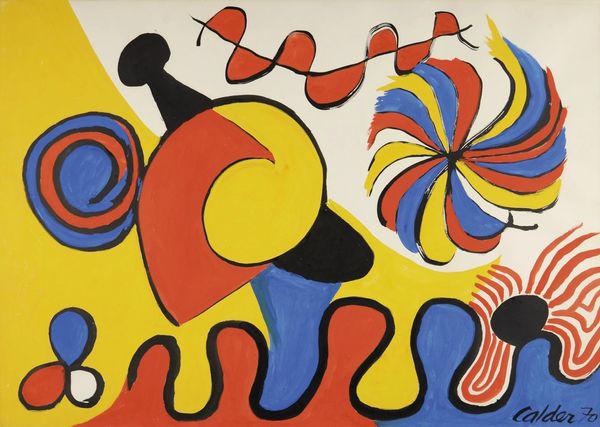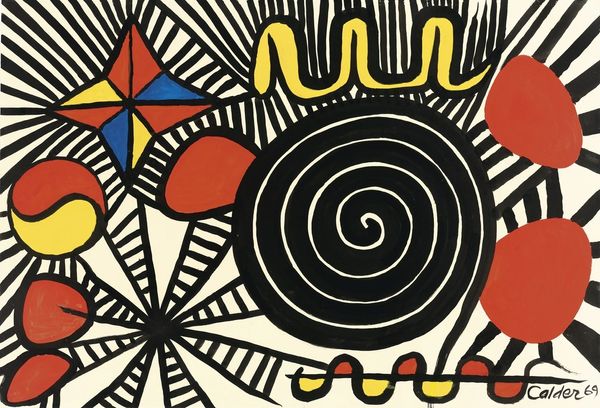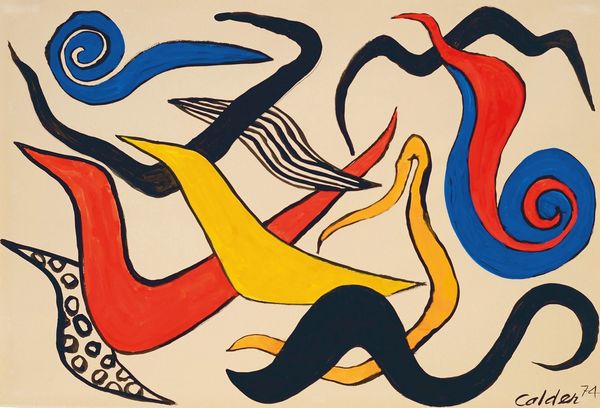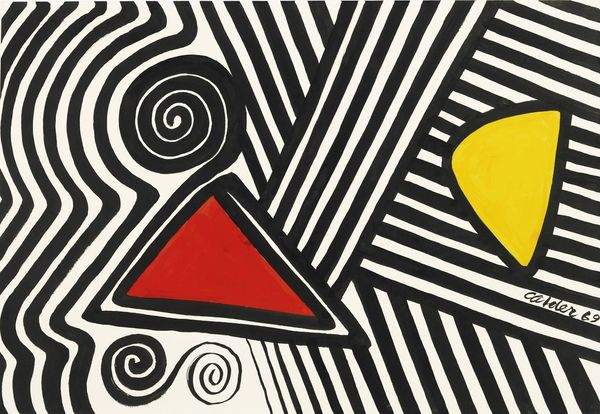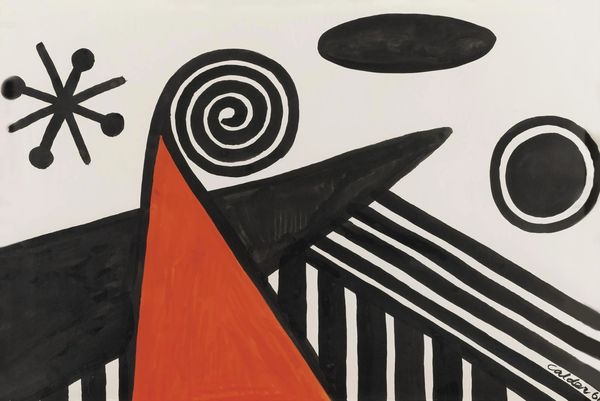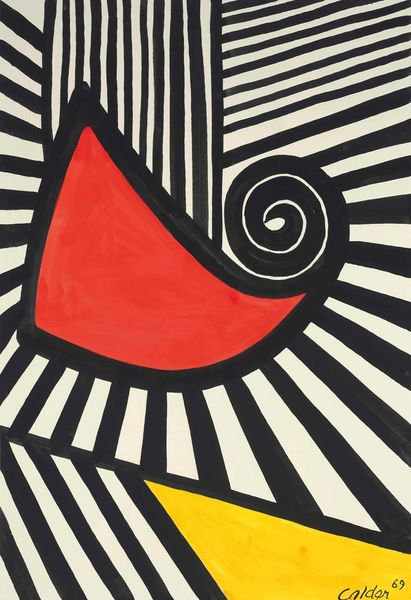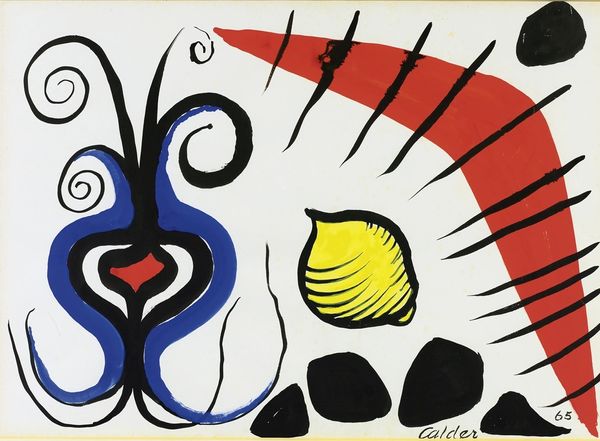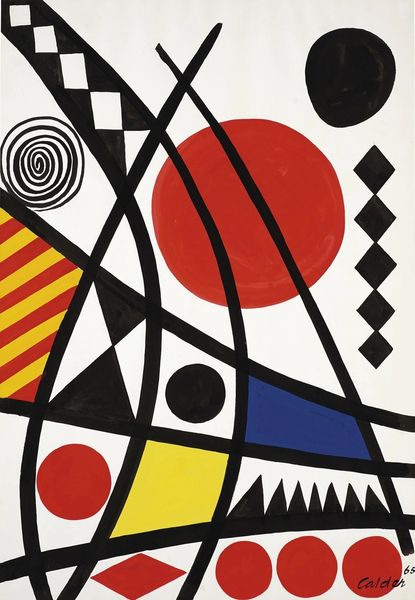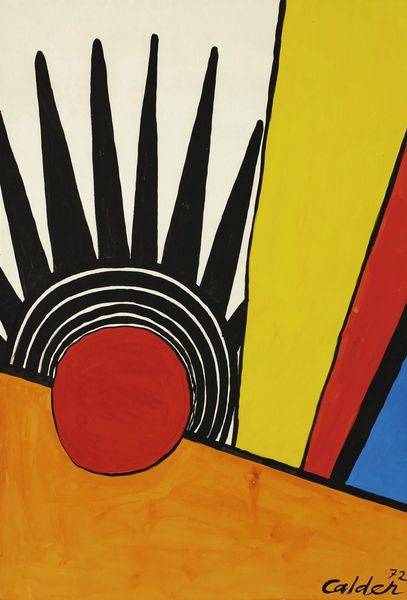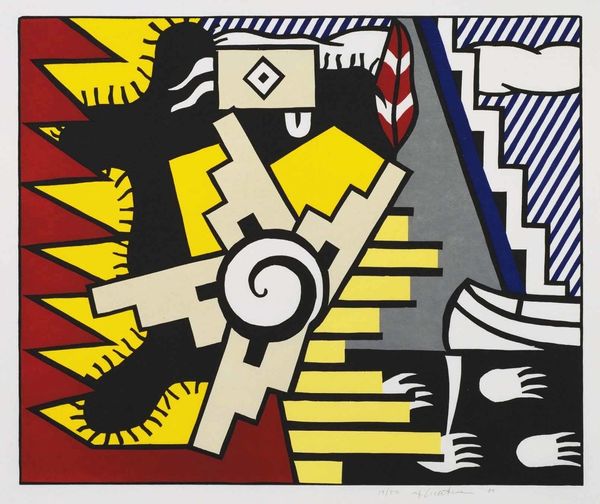
acrylic-paint
#
kinetic-art
#
acrylic-paint
#
abstract
#
form
#
geometric
#
line
#
modernism
Copyright: Modern Artists: Artvee
Editor: This is "L’Amazone," an acrylic on canvas created by Alexander Calder in 1972. The bold colours and shapes are so playful. What do you see in this piece? Curator: Instantly, the dynamism strikes me. These aren't static shapes; they evoke movement, like stylized pictograms telling a forgotten story. Consider the spirals – they might represent growth, life cycles, perhaps even a sense of swirling energy, common themes present in earlier symbology relating to feminine power. Editor: Feminine power? That’s not what I initially thought of. The black geometric shapes seem almost severe against the flowing lines. Curator: But consider the composition. Doesn’t the bright red form command your attention? Color symbolism here speaks volumes. Red embodies energy, passion, vitality – classically feminine forces within nature. And that vibrant blue slash, like a river cutting through a landscape? It reminds us of fluidity, adaptability, those aspects historically intertwined with understandings of feminine virtue. Editor: So you’re seeing a relationship between the forms and how they symbolically represent broader cultural ideas? Curator: Precisely! It invites speculation about ancient Amazonian societies, a land powered by women, symbolized by strong visual design. It’s Calder distilling complex narratives into a vivid visual language. What emotions does the bright yellow evoke in you? Editor: I hadn't really considered that before. It makes me consider the way artists often pull from broader historical concepts without it necessarily being overt. I think I see more movement within it now. Curator: Yes! It reveals the subconscious influence cultural memory holds over even the most abstract forms.
Comments
No comments
Be the first to comment and join the conversation on the ultimate creative platform.
